The translation springs are calculated using the surface-related coefficients. They are given in kN/m³ and describe how much kN/m² is required to compress the soil 1.0 m.
To define the springs for a member with limited width, the coefficients must be multiplied by the width. For a horizontal member with the z‑axis directed downwards, this is the y-expansion. Thus you get a translation spring defined in kN/m², which is related to the member. It indicates how much kN/m is required to compress soil of 1.0 m.
The translational springs always refer to the local member axes. For the determination, please do not use the stiffness modulus, but the subgrade reaction modulus. These are defined in kN/m³.
The shear springs represent a constant rotational spring along the member length and are specified in kNm/rad and per m. If you replace rad with m/m, you get kNm/(m/m × m), which can be simplified to the unit kN.
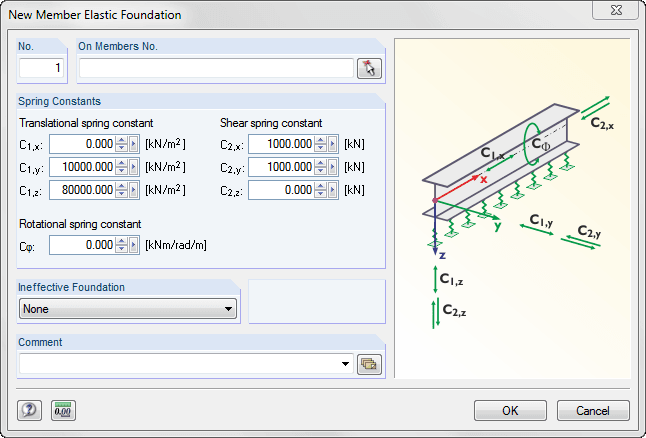
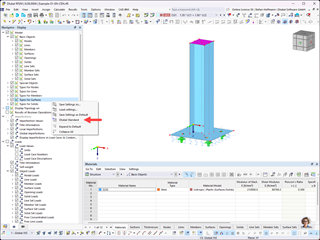

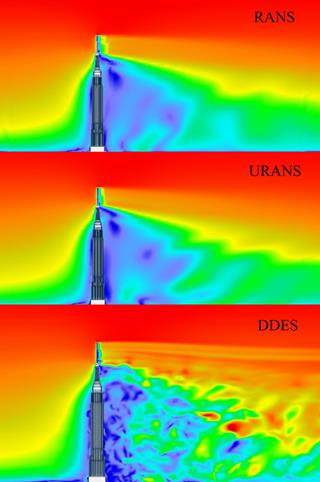

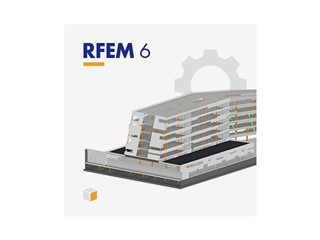























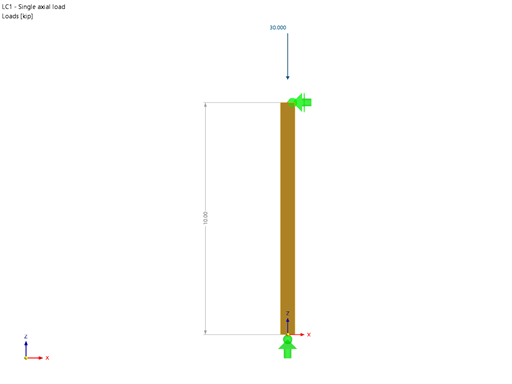








.png?mw=350&hash=1c031608c18b5a867799b52552d26586745de8ac)












